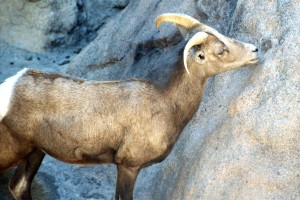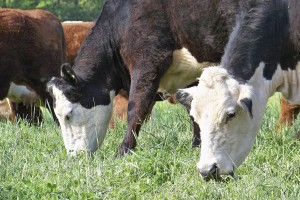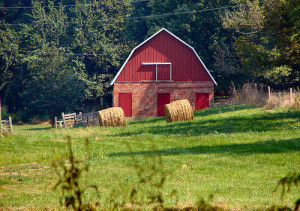

Livestock Nutrition and Winter Livestock Management
 Posted by SLN Staff on Dec 11th, 2013 | Comments Off on Livestock Nutrition and Winter Livestock Management
Posted by SLN Staff on Dec 11th, 2013 | Comments Off on Livestock Nutrition and Winter Livestock Management 

Winter can be a harsh time for animals, with the freezing rain, slit, snow and rain. While we, the humans are able to cloth ourselves in warm cloths and stay indoors to drink a hot cup of coffee or hot chocolate to keep us warm, the animals on the other hand, must rely on us in order to stay warm and safe and secured for the winter.
 During the winter months, the livestock and other pet animals can undergo a considerable amount of stress, especially if they are facing prolonged periods of cold winter, and need time to adapt to the sudden weather changes. In addition, if you are expecting acute weather conditions in your area, such as blizzards, snow storms, freezing rain, and so forth, you must take extra precautionary measures for your livestock.
During the winter months, the livestock and other pet animals can undergo a considerable amount of stress, especially if they are facing prolonged periods of cold winter, and need time to adapt to the sudden weather changes. In addition, if you are expecting acute weather conditions in your area, such as blizzards, snow storms, freezing rain, and so forth, you must take extra precautionary measures for your livestock.
The global climatic changes
Most of the recent natural disasters, about 60%, are due to the sudden climatic changes around the world, and the environmental scientists around the world have confirmed it. The climatic changes are mainly caused by increased carbon in the atmosphere, pollution, deforestation, and ozone layer depletion in many areas. Over the last 50 years, the surface temperature of the earth has increased by 1.5 degrees Celsius. Some places, the earth temperature has risen more than others.
Winter feed for livestock
 Feeding the cattle during the winter can be a difficult task and need special attention due to more energy requirements and special health concerns of the winter. Feeding costs during the winter can be higher depending on the type of program you choose. Usually the grazing animals have difficulty finding proper forage during winter as most grass are covered with snow and plants shed their leaves, and so, the farmers must provide the cattle with food by giving them. Providing proper cattle feed and supplements for the mature full grown cattle and calf require extra attention and might incur additional costs during the winter. Each feeding program can be different depending on the farmers’ needs and specific targets. The cattle grow according to the feeding program a farmer will adopt during the winter. The cost of feeding animals also depends on their size, age, body type, breed, calving date, and so on.
Feeding the cattle during the winter can be a difficult task and need special attention due to more energy requirements and special health concerns of the winter. Feeding costs during the winter can be higher depending on the type of program you choose. Usually the grazing animals have difficulty finding proper forage during winter as most grass are covered with snow and plants shed their leaves, and so, the farmers must provide the cattle with food by giving them. Providing proper cattle feed and supplements for the mature full grown cattle and calf require extra attention and might incur additional costs during the winter. Each feeding program can be different depending on the farmers’ needs and specific targets. The cattle grow according to the feeding program a farmer will adopt during the winter. The cost of feeding animals also depends on their size, age, body type, breed, calving date, and so on.
Tips on preparing livestock for winter
When the winter arrives, the work for the farm becomes even more critical. For better sustainability of your farm, you must take necessary measures and prepare your livestock now. Being better prepared for the winter and having an emergency plan will allow you to save more cattle in your farm from getting sick in the cold winter and it will also save you money.
Tip 1: Winter water resources
 We cannot emphasize strongly enough the necessity of a clean and steady supply of water for the livestock all year round, especially during the winter, when all natural water containing resources such as swamps, lakes and rivers are frozen. Many people have misconception that an animal can get water from eating snow, however, considering that an animal might need about 14 gallons of water a day, eating snow isn’t very realistic idea, and should be discouraged. Moreover, when an animal eats snow, the body temperature goes down, it needs more energy to stay warm. Therefore, tank heaters should be used for supplying animals with good clean source of drinking water on a regular basis. Some of the modern electrically heated water tanks are safe and does not allow water to freeze during the cold winter. However, extra precautions should be taken and all manufacturers recommended safety measures should be followed.
We cannot emphasize strongly enough the necessity of a clean and steady supply of water for the livestock all year round, especially during the winter, when all natural water containing resources such as swamps, lakes and rivers are frozen. Many people have misconception that an animal can get water from eating snow, however, considering that an animal might need about 14 gallons of water a day, eating snow isn’t very realistic idea, and should be discouraged. Moreover, when an animal eats snow, the body temperature goes down, it needs more energy to stay warm. Therefore, tank heaters should be used for supplying animals with good clean source of drinking water on a regular basis. Some of the modern electrically heated water tanks are safe and does not allow water to freeze during the cold winter. However, extra precautions should be taken and all manufacturers recommended safety measures should be followed.
Tip 2: Assess body condition
It is important for the farmer to determine the body condition of the animals before the winter. The fat body cover of the animals of all species is assessed by a scoring system called Body Condition Scoring System. With this system, livestock managers can assess the amount of body fat present on animals. It needs hands on assessment to score the animals’ body fat to determine whether they are safe for the winter.
Tip 3 : hand feeding the animals
While managing livestock in for the winter, it is important to determine how often and how much food should be provided to the animals. Hand feeding the animals would give the managers a good idea about the food consumption of each of the individual animals during the winter. Many farmers tend to feed large bales of feed to groups of animals once a day. Although this kind of feeding may minimize the labor costs, the individual needs of an animal and animal health may get ignored in this process. It is important that each animal is fed properly and adequately. Animal who are fed more than what they can consume at one feeding tends to waste 50% of their food.
Tip 4: Prepare shelter
 It is obvious that animals need specially developed shelters during the cold months of winter. However, animals do not like to be confined in a closed burn, nor is it necessary or practical to keep large herds of cattle in an enclosed barn every day. If the animals are fed and kept well protected from rain, wind chills, and snow, they are able to survive the winter without any problems, and it would also lower the costs and need for energy giving food. A three sided animal shed is ideal for keeping the cattle comfortable. Trees, solid or semisolid fences are also useful in keeping them safe and warm.
It is obvious that animals need specially developed shelters during the cold months of winter. However, animals do not like to be confined in a closed burn, nor is it necessary or practical to keep large herds of cattle in an enclosed barn every day. If the animals are fed and kept well protected from rain, wind chills, and snow, they are able to survive the winter without any problems, and it would also lower the costs and need for energy giving food. A three sided animal shed is ideal for keeping the cattle comfortable. Trees, solid or semisolid fences are also useful in keeping them safe and warm.
Tip 5: Health inspection
You should always consult with a professional veterinarian for health inspection and heath concerns of the animals on a regular basis. Your animals may need special care, vaccination, medication, or they may be in other health conditions especially in case of pregnant animals. Your veterinarian can suggest you regarding the special needs of the animals including special diets or any other health concerns of the animals.
Taking care of your livestock’s nutrition, environmental and health requirements during the chill of winter will help their welfare as well as increase their value. As the old adage goes “prevention is better than cure” ,taking preventive measures can save you from damaging the profitability of your livestock and ensure better sustainability of livestock.






